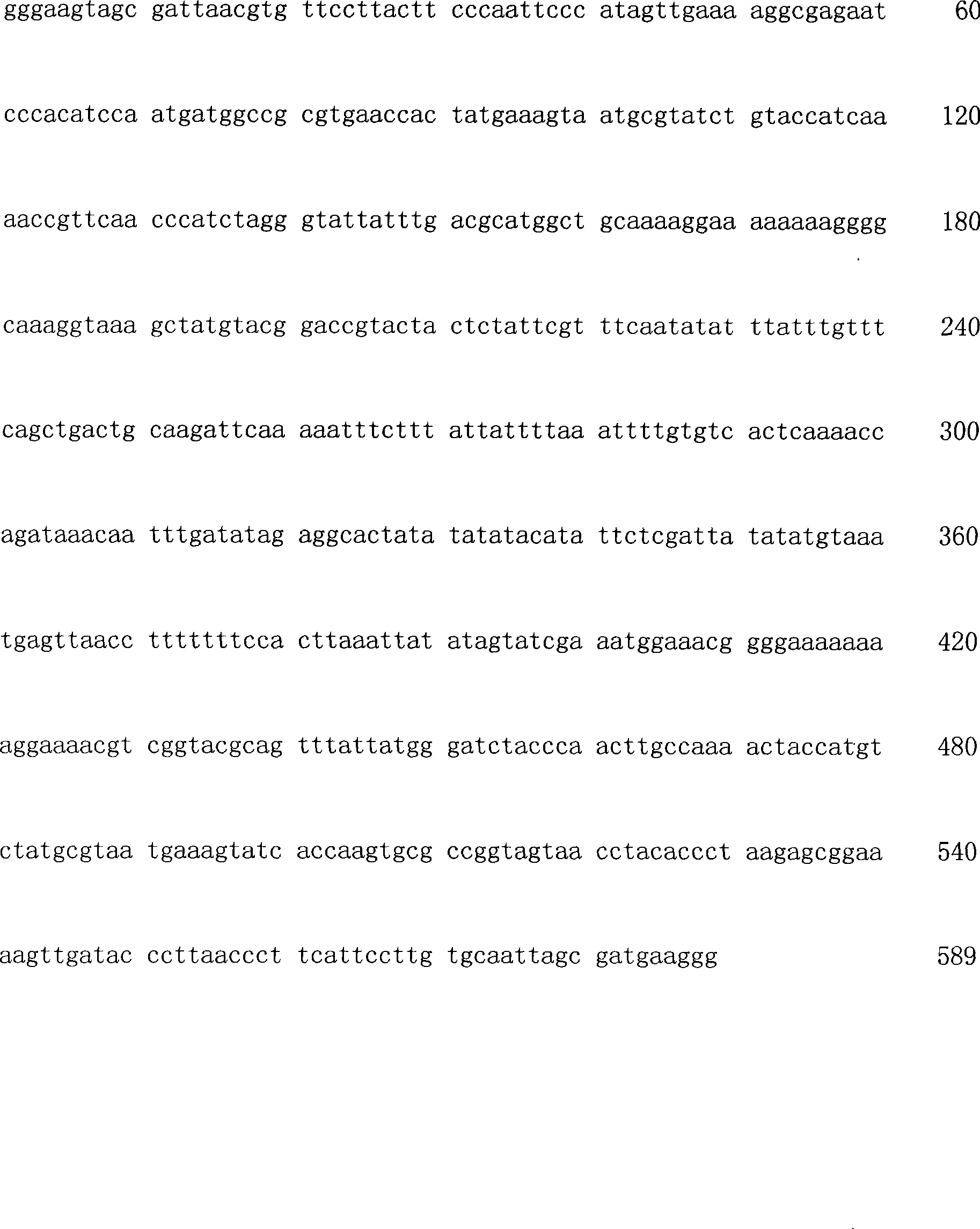Method for improving content of amylose in rice by using RNA interference
An amylose content, RNA interference technology, applied in the direction of recombinant DNA technology, introduction of foreign genetic material using vectors, etc., can solve the problems of weak inhibition of endogenous gene expression, reduction of target gene expression, poor genetic stability of inhibition effect, etc. Achieve the effect of small RNA interference fragments, high genetic stability, and convenient agronomic traits
- Summary
- Abstract
- Description
- Claims
- Application Information
AI Technical Summary
Problems solved by technology
Method used
Image
Examples
Embodiment Construction
[0024] Embodiments of the present invention will be specifically described below.
[0025] 1. Obtaining RBE3 gene-specific RNAi fragments
[0026] (1), utilize CTAB method to carry out the extraction of rice genome DNA.
[0027] Take 0.5 g of young rice leaves, add liquid nitrogen to pulverize, add 2 mL of 2% 2×CTAB extract solution kept at 65°C, mix well, and keep at 65°C for 30-60 minutes. Add an equal volume of chloroform / isoamyl alcohol (24:1), mix gently by inversion, centrifuge at 10000r / min for 5min. Take the supernatant, add 1 / 10 volume (about 0.2 mL) of CTAB / NaCl solution at 65°C, and mix by inverting. Extract with an equal volume of chloroform / isoamyl alcohol (24:1), centrifuge at 10000r / min for 5min. Take the supernatant, add (exactly) equal volume of CTAB precipitation solution, invert and mix well, if precipitation is visible, proceed to the next step, otherwise, keep warm at 65°C for 30min. 4°C, 2700r / min, centrifuge for 5min. Remove the supernatant and resu...
PUM
 Login to View More
Login to View More Abstract
Description
Claims
Application Information
 Login to View More
Login to View More - R&D
- Intellectual Property
- Life Sciences
- Materials
- Tech Scout
- Unparalleled Data Quality
- Higher Quality Content
- 60% Fewer Hallucinations
Browse by: Latest US Patents, China's latest patents, Technical Efficacy Thesaurus, Application Domain, Technology Topic, Popular Technical Reports.
© 2025 PatSnap. All rights reserved.Legal|Privacy policy|Modern Slavery Act Transparency Statement|Sitemap|About US| Contact US: help@patsnap.com

